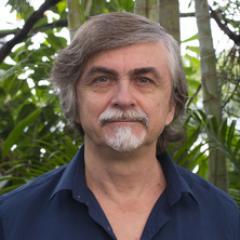Application of Nanodiamonds for Quantum Measurements of Temperature at Nanoscale
Project Level: Honours
Nanodioamonds are very small (20-200 nm across) crystals of diamond which have a very large potential in applications. One of these applications is nanothermometry, a field of a great interest for biologists, physicists, and chemists. Several controversial statements and results [1], especially related to microscopic biological systems such as cells, make the field even more interesting. A possible origin of the controversy is that at nanoscale the system is not at thermal equilibrium.
In this project, you will apply nanothermometry to investigate thermal gradients appearing during evaporation of water droplets. Evaporation of a droplet on a solid surface is a very common phenomena in nature. Everybody has a chance to every day. It is quite amazing that a physical model explaining formation of the rings has been suggested only about 25 years ago in a seminal paper [2]. Due to evaporation, the system is not at equilibrium and therefore can be considered as a toy playground for testing a thermometer. There are also scientific questions to answer and problems to solve. For example, the model in [2] predicts that the velocity of the fluid in the evaporating droplet deposited on a solid substrate increases towards the rim of the droplet and seems to be in contradiction with our observations [3]. This is original research aiming at understanding of intracellular heat transfer. Theoretically oriented aspects pertaining to modelling molecular dynamics can also be included.
- Madoka Suzuki, Taras Plakhotnik, The challenge of intracellular temperature, Biophysical Reviews (2020) https://doi.org/10.1007/s12551-020-00683-8
- R. D. Deegan et al, Capillary flow as the cause of ring stains from dried liquid drops, Nature 389, 827 (1997)
- Taras Plakhotnik and Haroon Aman, Investigation of evaporation of sessile droplets using luminescent nano-probes and other applications of NV centers in diamond, EPJ Web of Conferences 190, 02008 (2018)

